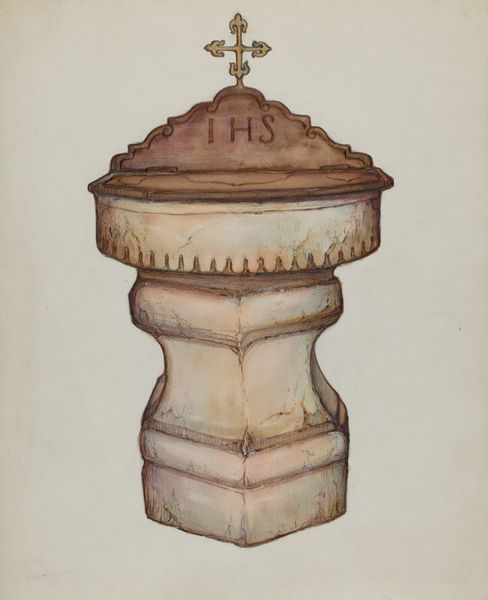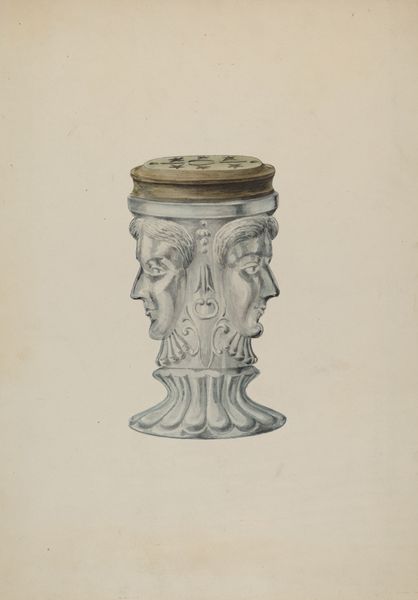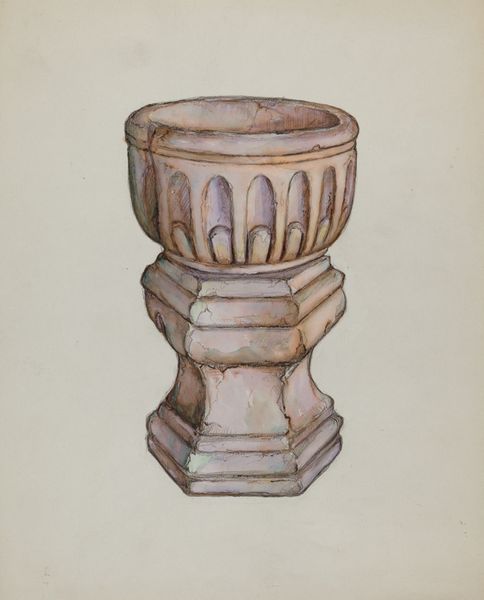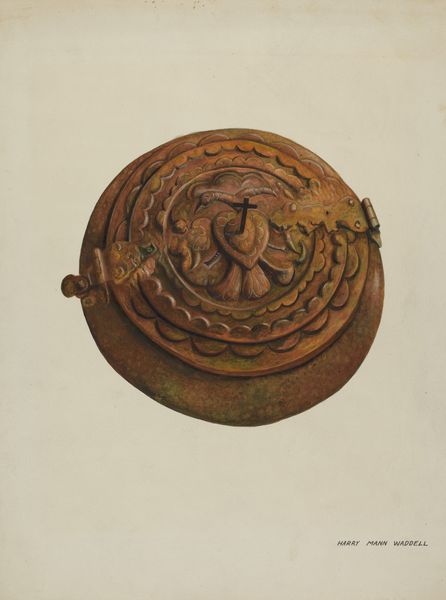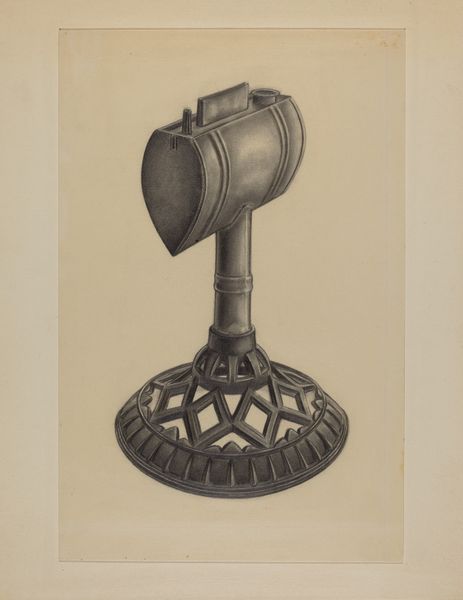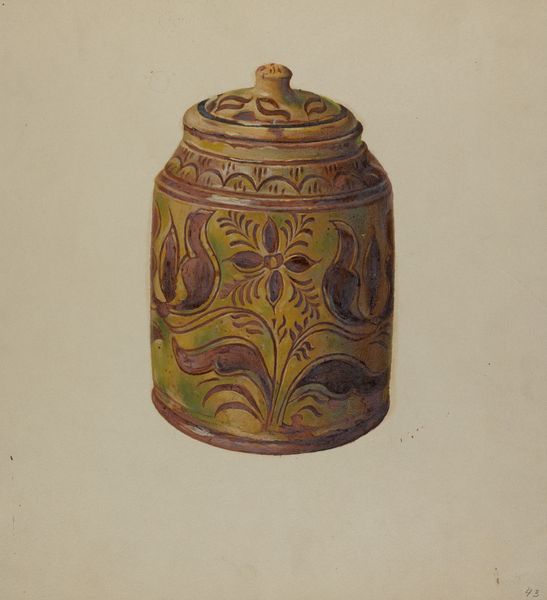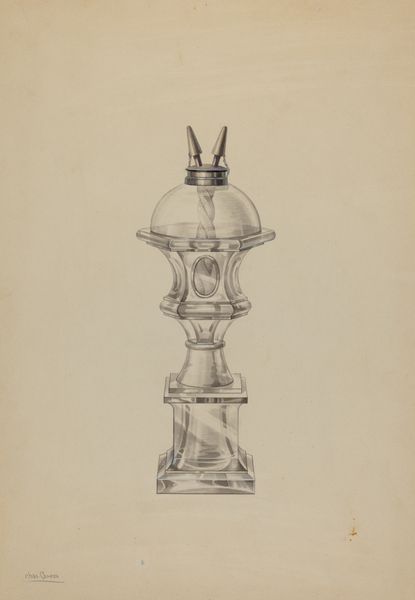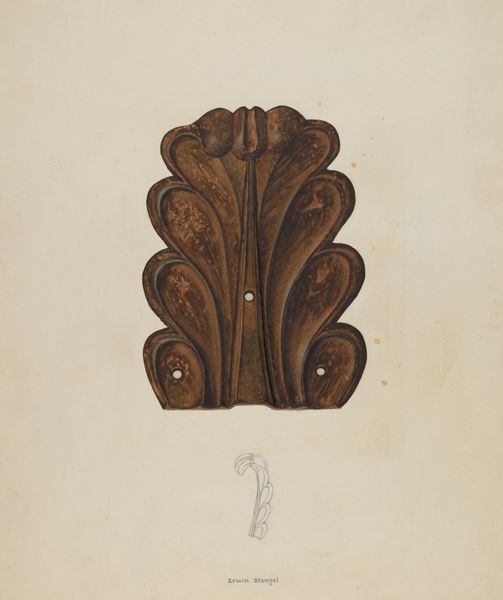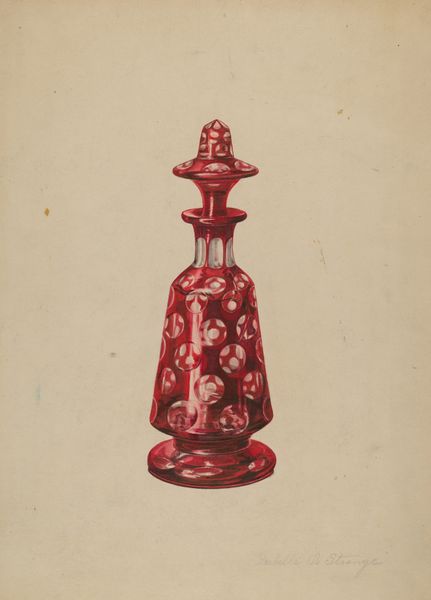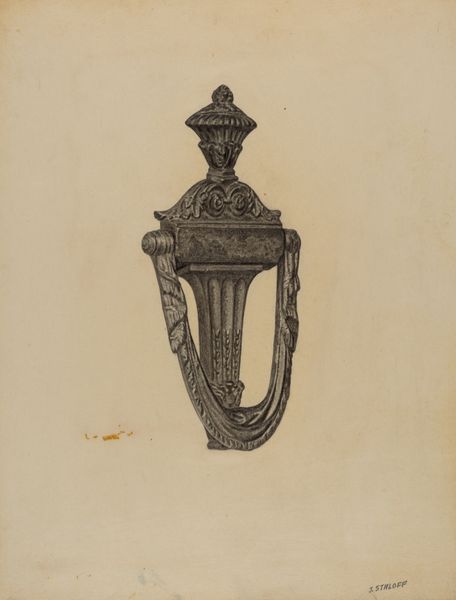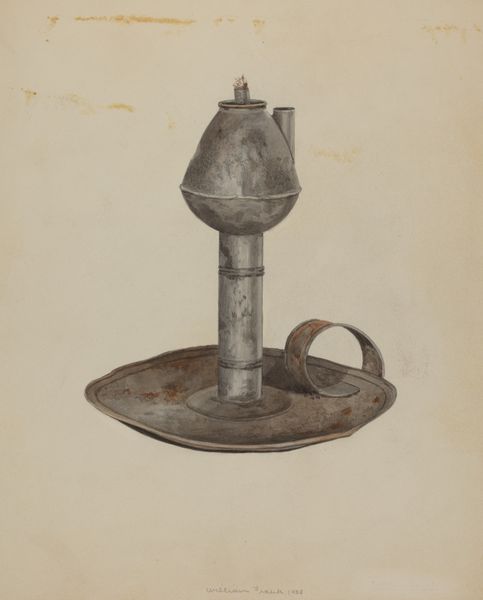
drawing, pencil, wood
#
drawing
#
pencil drawing
#
pencil
#
wood
#
watercolour illustration
#
academic-art
Dimensions: overall: 40.8 x 30.5 cm (16 1/16 x 12 in.) Original IAD Object: 12 1/2" high; 8" wide
Copyright: National Gallery of Art: CC0 1.0
Curator: Take a moment to consider this intriguing work, simply titled "Wood Carving - Horizontal", dating from around 1939, made using pencil and watercolour. Editor: Immediately, I’m struck by its slightly melancholic tone. The grey washes give the wood a sense of age and wear. It feels…archival. Curator: Indeed. Notice how the medium itself—watercolor and pencil—allows for a detailed examination of the grain and structure of the carved wood. This focus feels significant given the socio-economic backdrop of the late 1930s and the labor invested in the crafting tradition during that era. Editor: Precisely. Looking at the formal presentation here, though, what about the act of documenting it, of turning something functional—perhaps a furniture element—into a subject worthy of artistic study, worthy of presentation in a museum setting like this? Curator: That's a critical point. Think about how the original function of the object and the status of this work shift, once represented in pencil and watercolour on paper, it changes the object’s use and purpose entirely. Does this elevation change its social worth? How? Editor: It certainly makes us consider value, and labor, differently. We are encouraged to consider craftsmanship during times of political distress such as during the end of the roaring 20’s, and into the start of WW2, where materials might become scarce and labor devalued. Curator: The delicate rendering really directs our attention to the labor-intensive process. Notice how each groove, each knot in the wood is meticulously documented. This highlights both the skill involved in creating the original object, but also points toward the social importance placed on artisanship and the ethics of hand-crafted versus mass-produced goods. Editor: So, looking at the complete journey of the wood piece presented here, from utilitarian use to artistic object and social record—the transformation of this single wooden detail presents a very rich layering of ideas, culture, and craft. Curator: I agree. By closely inspecting these renderings of materials we reconsider production, archival importance and craftsmanship in our society.
Comments
No comments
Be the first to comment and join the conversation on the ultimate creative platform.
